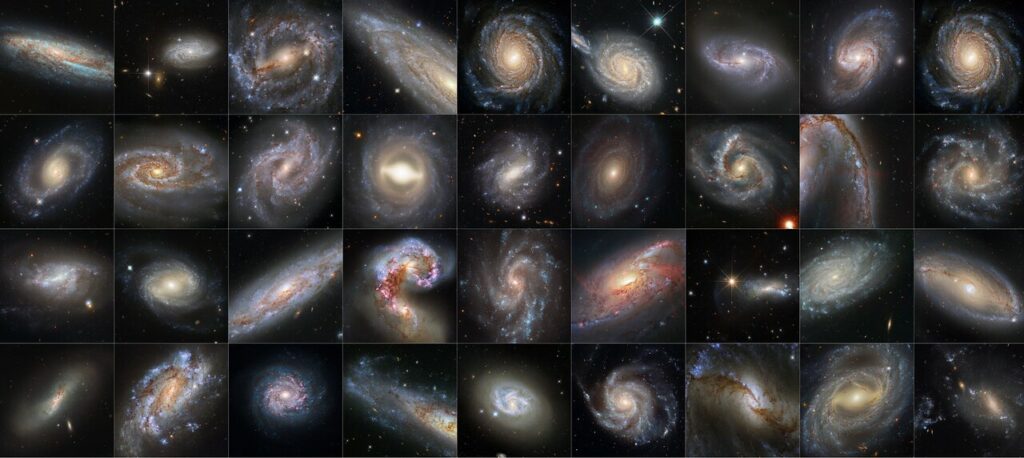Back when I was nineteen, I went home from college and told my parents I was switching majors from international relations – which was kind of a pre-law program – to astrophysics. There was much concern that if I didn’t become a lawyer or computer scientist, I’d end up unemployed. The standard arguments you’ve probably seen in TV shows and books ensued, and all those many years ago, when asked what I wanted to do as an astronomer, I said I wanted to be part of the Hubble Key Project and use variable stars to try and better understand the expansion rate of the universe.

While I never ended up becoming part of that great science program, I have continued to watch everything that it and its child research programs have produced, and now nearly thirty years later, the kinds of results we thought were a decade away are finally getting published.
Here is the background you need to know. There is a kind of elder star called a Cepheid variable that is easy to see at large distances and gives off a standard amount of light that is correlated with how fast it pulsates. If you see a star dimming and rebrightening over three days, you can look up exactly how much light it gives off, measure how bright it appears, and calculate just how far away it is with the same kind of maths your brain does instinctively to tell you how near or far away a motorcycle headlight is at night.
Cepheids exist in our galaxy, and missions like Gaia have let us use trig to survey their distances. Unfortunately, while bright, we can’t see them at a truly huge distance like we can supernovae.
Type 1a supernovae are also, generally, a very standard luminosity. They are just exploding white dwarfs that ate too much of their neighbors and one day hit a critical mass and exploded. These explosions all brighten and fade in a characteristic way, and if we can accurately measure the distance to a few of them, we can use them just like the variable stars, only to much greater distances.

Acknowledgment: Mahdi Zamani
In a special focus issue of The Astrophysical Journal, researchers led by Adam Riess look at the host galaxies of 42 Type Ia supernovae that were close enough for his team to resolve the Cepheid variable stars.
They used the variable stars to calibrate the luminosity of these supernovae and thus refine our measurements of distant galaxies. These results update our understanding of the expansion rate of the universe and yield a rate of 73.3 km/s per megaparsec (Mpc) with an error of just 1.04 km/s/Mpc.
This means that every three million light-years across volume of space is expanding by 73.3 km/s/Mpc, and we can expect our universe to double in size in ten billion years.
This is exactly the kind of science I wanted to do when I was nineteen and that I’m now glad I didn’t do because it is unexpectedly controversial, and research is hard enough without adding controversy.
These measurements look at how our universe has been expanding for the past several billion years and how that rate has been changing and extrapolate back in time to tell us the age of the universe and predict how the early universe should have been expanding.
But the early universe apparently didn’t read these results and decided it’s going to behave somewhat differently.
Using completely different techniques, researchers studying the cosmic microwave background come up with an expansion rate of 67.4 km/s/Mpc +/- 0.5 km/s/Mpc.
While 73.3 and 67.4 may seem like they are similar numbers, these two numbers are measured so accurately that this difference is really mind-boggling. It says there is something wrong with our understanding of how we got from the Big Bang to today. We are missing physics somewhere, and no one really knows where. A lot of “you must have errors in your measurements” and “you must have errors in your physics” phrases have been slung around. As an observer, I’ve had a theorist tell me my data was wrong because it didn’t match their theory, and I really didn’t enjoy that.
In this situation, these 42 supernovae in 42 galaxies with visible cepheids are here to say that the observations are right. We really do know how fast the universe is expanding. Now, we just need a new understanding of how it all started. And that remains a mystery.
And I’m really glad I’m not the one trying to figure any of that out.
More Information
ESA Hubble press release
NASA Hubble press release
“A Comprehensive Measurement of the Local Value of the Hubble Constant with 1 km/s/Mpc Uncertainty from the Hubble Space Telescope and the SH0ES Team,” Adam G. Reiss et al., to be published in The Astrophysical Journal (preprint on arxiv.org)




 Join the Crew!
Join the Crew!
 Escape Velocity Space News
Escape Velocity Space News
0 Comments